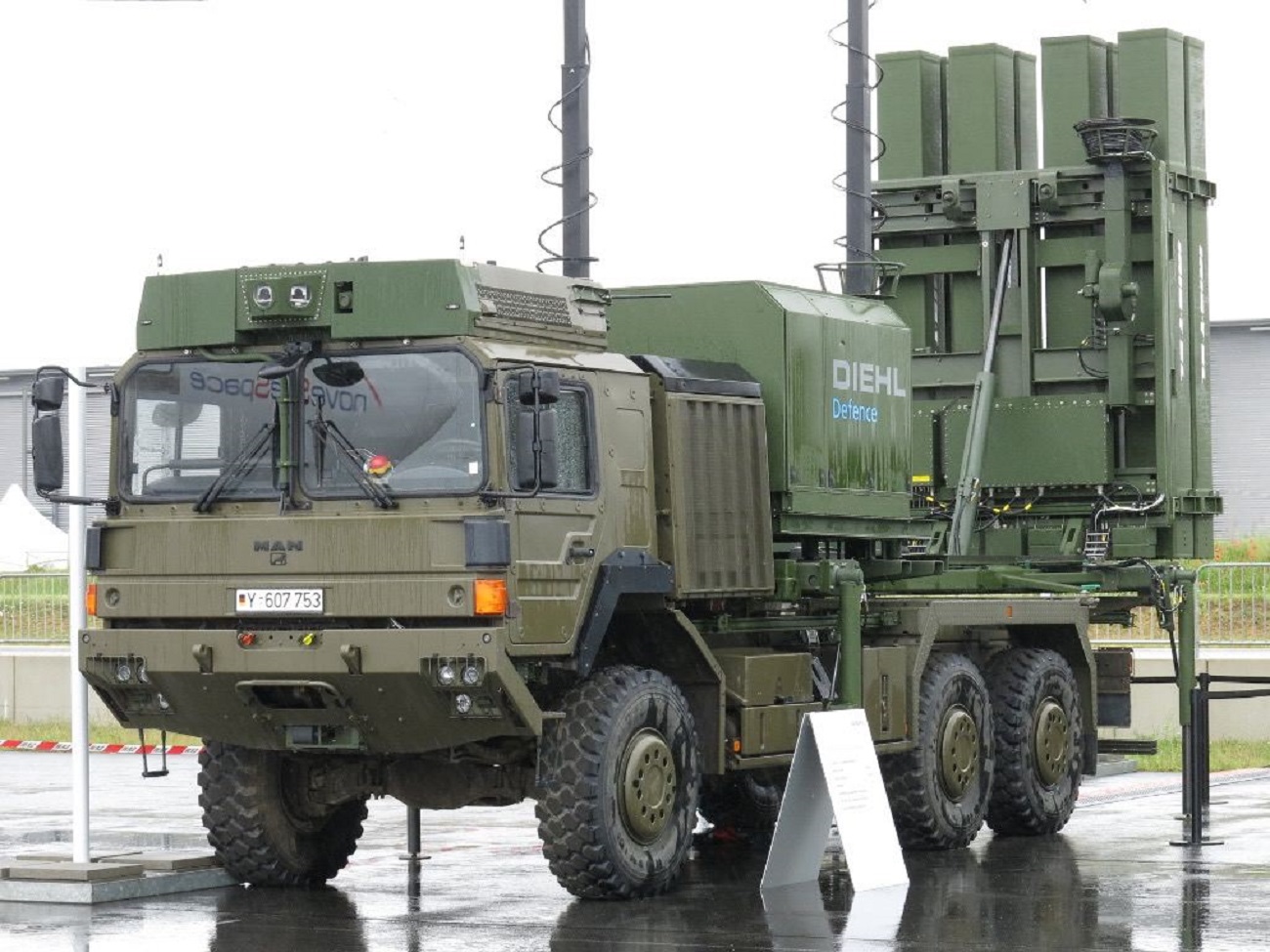On November 30, Ministry of Defence of the Republic of Latvia and the German company “Diehl Defence” signed a purchase order on the procurement of the IRIS-T medium-range air defence system. By signing the purchase order worth around 600 million euros, Latvia will receive all the necessary equipment for an effective operation of IRIS-T systems, which will ensure the introduction of layered air defence in Latvia. Deliveries of medium-range air defence systems are scheduled to start in 2026. Until then Latvia needs to train its personnel and upgrade its infrastructure, as well as fulfil other preconditions, so that the National Armed Forces are ready to fully operate and maintain the IRIS-T systems by the time of the delivery.
In September Latvia and Estonia signed the framework agreement on the purchase of the IRIS-T medium-range air defence system manufactured by the German company “Diehl Defence”. The purchase of IRIS-T medium-range air defence system will contribute to Latvia’s goal to establish a multi-layered air defence system, where air defence systems of various range not only protect other ground assets but also provide mutual protection to each other. IRIS-T air defence system is capable of destroying enemy aircrafts and drones within a radius of up to 40 kilometres and at altitudes of up to 20 kilometres. The joint procurement of one type of system will allow Latvia and Estonia to save budgetary funds and facilitate mutual coordination in the defence of the Baltic States region.

The IRIS-T (infrared imaging system tail/thrust vector-controlled) is a medium range infrared homing air-to-air missile available in both air-to-air and ground defence surface-to-air variants. It also is called AIM-2000. The missile was developed in the late 1990s–early 2000s by a German-led program to produce a short to medium range infrared homing air-to-air missile to replace the AIM-9 Sidewinder in use by some NATO member countries at the time. Due to increased demand due to the Russian invasion of Ukraine, Diehl Defence is increasing production of IRIS-T systems and missiles. It plans to produce three to four systems in 2024 and at least eight in 2025, with missile production planned to grow to around 400 to 500 per year starting in 2024.[46]
A goal of the program was for any aircraft capable of firing the Sidewinder to also be capable of launching the IRIS-T. The air-to-air variant was fielded in 2005. Surface-to-air defence systems variants came later, with the short-range IRIS-T SLS fielded in 2015, and the medium-range IRIS-T SLM fielded in 2022. One IRIS-T SLM battery, as supplied by Germany to Ukraine, consists of three truck-mounted launchers, carrying eight missiles each (with a range of 40 kilometres or 25 miles), and a separate command vehicle that can be positioned up to 20 kilometres (12 mi) away. The command vehicle integrates multiple radar sources, and is able to launch and track all 24 missiles simultaneously. The IRIS-T SLM can counter surface-to-air missiles and cruise missiles, including low-flying, stealthy missiles such as the Kalibr.
















